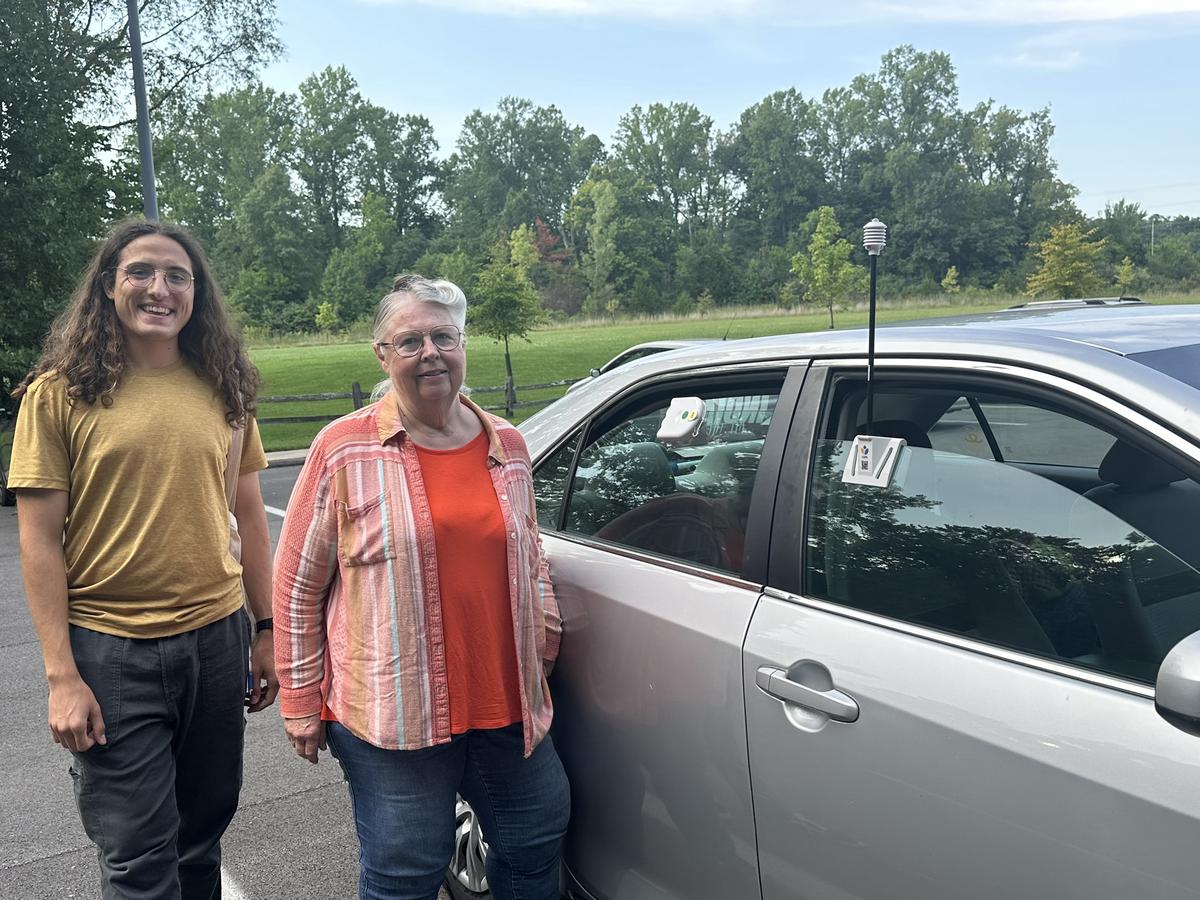
CAPA Strategies and the City of Bloomington, Indiana used AirBeams and temperature sensors to capture neighborhood-level pollution and heat data while also analyzing how climate change could affect future heat risks.
In August 2024, CAPA Strategies – an organization of researchers, planners, and data scientists that helps communities assess local hazards and identify adaptation strategies - partnered with volunteers in Bloomington, Indiana to better understand the city’s air. Using AirBeams and heat sensors, volunteers gathered data on fine particulate matter (PM2.5), which poses health risks, especially during hot summer days. The size and portability of AirBeams made it possible to uncover pollution patterns that traditional government monitoring stations often miss. The project sought to capture neighborhood-level pollution and heat data while also analyzing how climate change could affect future heat risks. Using NASA’s downscaled climate projections, CAPA and the City of Bloomington modeled moderate extreme carbon scenarios to assess changes in extreme heat days, heat wave duration, and seasonal heat patterns.
A 21-day stationary monitoring phase followed, with AirBeams installed at nine homes and one local nonprofit, the South Central Community Action Program. These AirBeams tracked day-to-day fluctuations in PM2.5 levels, identifying areas with consistent exposure risks. In the Vinegar Hill Historic District, for example, one AirBeam recorded elevated pollution on six separate days—an important signal for residents and decision-makers alike.
The data revealed major temperature differences across Bloomington, with some neighborhoods up to 8°F hotter due to the urban heat island effect. As climate change progresses, these patterns are expected to worsen. Projections show sharp increases in days with heat index values above 90°F and nights with temperatures above 80°F, along with longer, more intense heat waves. By 2050, almost the entire developed area of Bloomington is expected to experience extreme heat, significantly expanding urban heat islands and increasing risks to vulnerable populations. Rising temperatures also worsen air quality by accelerating ozone formation, increasing wildfire smoke exposure, and driving higher fossil fuel energy use—further heightening public health risks, especially for vulnerable communities.
Organizing the data collection effort was a collaborative process. CAPA worked closely with city planners, health officials, and local organizations to recruit and train volunteers. The community-led model is designed to return the data to the people who collect it, so residents aren’t just subjects of research but participants in the process.

What stood out was how community members engaged with the data. They weren’t just collecting it—they were learning from it, talking about it, and using it to better understand their environment. In other CAPA projects, like one in Sierra Leone, similar sensors have helped quantify the impact of landfill proximity on local air quality. As one team member said, “Being able to put a number to a situation that’s devastating health-wise—that’s powerful.”
In Puerto Rico, a team is currently deploying 15 AirBeams to track seasonal dust storm impacts, highlighting how accessible monitoring tools can support public health in resource-limited contexts. CAPA Strategies has successfully led numerous global initiatives using the AirBeam, including the Heat Watch Albania project. In this campaign, CAPA Strategies collaborated with local climate researchers and community volunteers to conduct a multi-day HeatWatch effort across Shkodra, Tirana, and Vlora. Together, they identified areas most impacted by extreme heat and poor air quality, providing valuable data to support climate resilience efforts.
The AirBeam and temperature data collected by CAPA volunteers is actively being used by local partners, and its presence continues to spark awareness and dialogue. As one CAPA staffer reflected: just making this information visible can be powerful. In the end, the campaign wasn’t just about measuring the air, it was about giving people a new way to understand and protect their environment.
CAPA Strategies proved that with the right tools and support, everyday residents can take meaningful action in shaping healthier, more resilient communities. Bloomington now has a clearer picture of its air, and the people in it have a stronger voice in shaping what comes next. To explore more of CAPA Strategies’ air quality monitoring campaigns, click here and get in touch directly with CAPA at info@capastrategies.com.